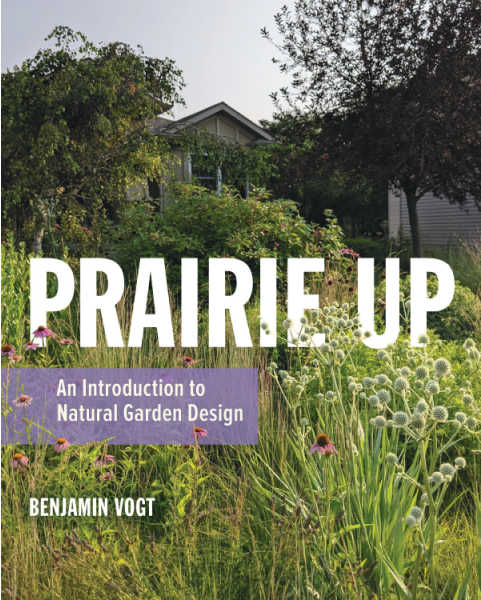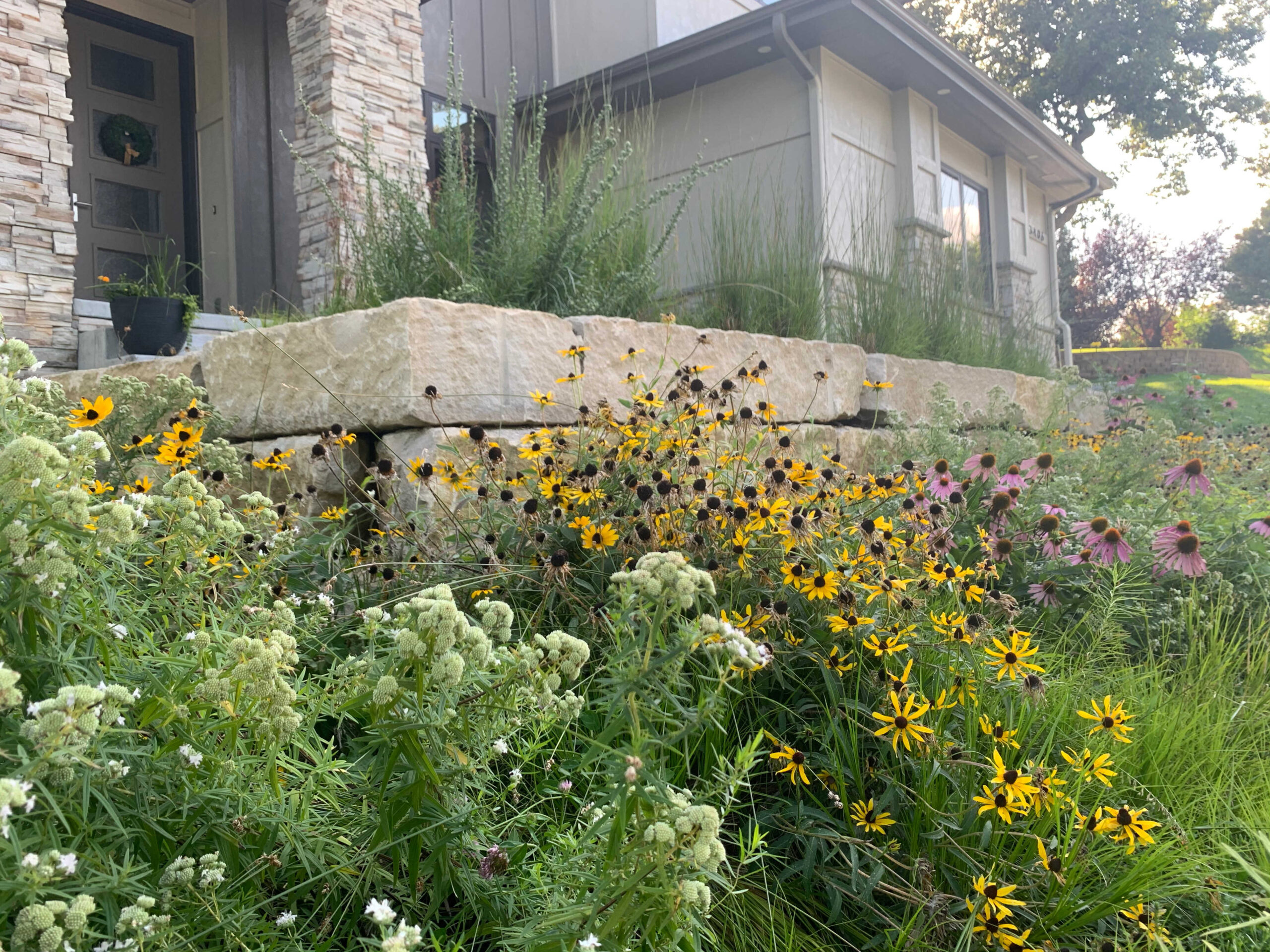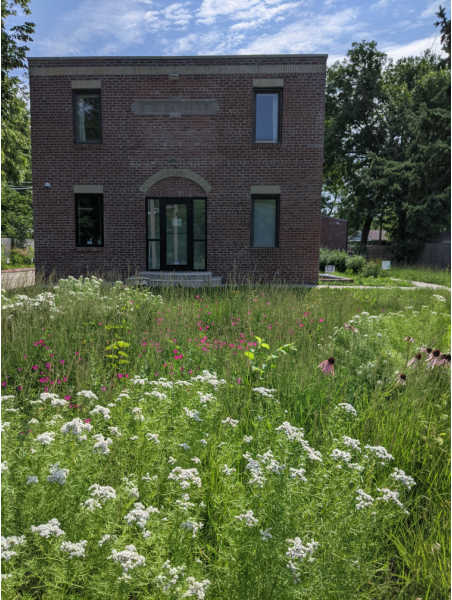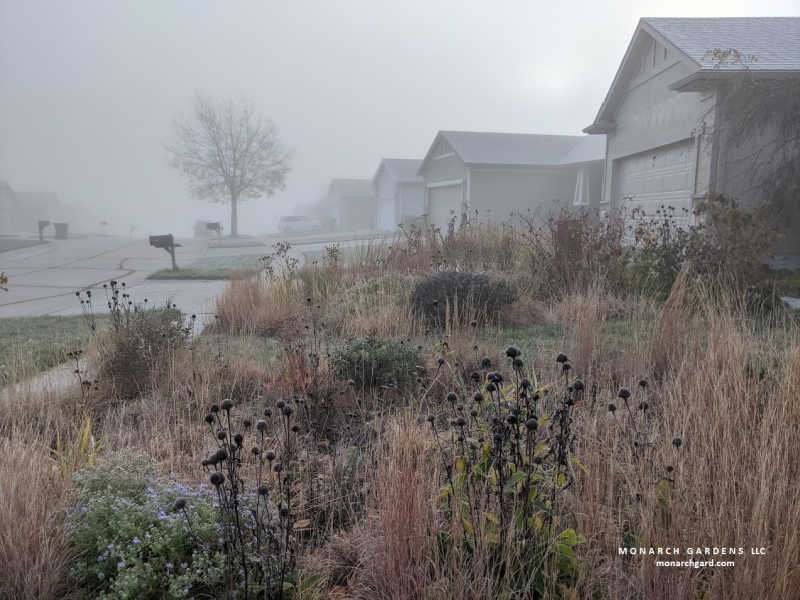You’ve been yearning to design a garden, yard, or meadow space but can’t seem to get a grip on which plants to include or how to design the site. Or maybe you’re in the middle of planning one of those spaces but myriad choices have you frozen with indecision. Help has arrived! A new book, Prairie Up: An Introduction to Natural Garden Design by Benjamin Vogt, brings the process into clear focus, explaining exactly how to approach site analysis, plant selection, and design elements, with prose that is not only easy to understand but also a pleasure to read. The book features beautiful photos on nearly every page, as well as charts and diagrams, bringing an essential visual perception of the concepts.
Let’s re-think pretty and give equal value to ecosystem function. Photo by Ben Vogt, used with permission.
Prairie Up has earned an endorsement from Doug Tallamy, who writes, “This how-to knowledge draws from Vogt’s own experience designing and maintaining suburban gardens. This type of experience is priceless!” The point here is that although the title might lead you to think the book is only for prairie environments, in fact, its purpose actually is to enable home gardeners to use native plants successfully in those suburban and urban spaces that feature flowers and grasses. Coloradans will find that many of Mr. Vogt’s lists include mostly plants that are native to our state.
The book opens with a chapter explaining the ecological importance of native plant communities in general and grasslands in particular. It’s a chapter worth a read even if you’re not interested in gardening at all. Did you know, for instance, that grasslands “are more reliable carbon sinks than forests because most carbon is stored underground and won’t be released when fires move through; they are also some of the most cost-effective and scalable ecosystems to sequester carbon”? Ben ends the chapter with compelling reasons why even small native plant spaces are beneficial, and notes that our communities are rife with opportunities for habitat waystations. Each chapter includes reminders of the relationship between particular species of bees, birds, butterflies, wasps, moths, and other wildlife and the native plants they rely on.
The success of a garden isn’t just about plants staying alive and looking good, but also doing good. Plants aren’t just decorations.
“A pocket prairie outside an office building serves as a habitat waystation while reducing management costs.”
Photo by Ben Vogt, used with permission.
Mr. Vogt explains how plants self-organize over time, both above and below ground, in their natural communities, and how this relates to your own plant selections. You will learn how to plant in drifts, how to plant in layers and in bloom succession times, and how to prepare beds. There are very specific directions for installation, whether using seeds or plugs. He explains where to find local ecotype plants, and why you should. Excellent guidance on ways to ensure that your design will meet general standards for “a beautiful garden” in the eyes of others – what are the things that make a garden look messy, and how to make a space “welcoming and purposeful.”
Invaluable advice and specific checklists are included to help gardeners cope with HOAs, cranky neighbors, and Weed Inspectors. This could be a superlative resource for those of you who may be asked to present to an HOA, or perhaps a city or state official in the coming year.
Prairie Up concludes with an excellent chapter on resources, leaving the reader not just with lists but with explanations of where to seek certain information on relevant topics such as where to find local ecotype plants, as well as where to find further guidance about design, plant identification, grasslands, and management. Interestingly, Native Plant Societies are not mentioned in any of these categories – I had to ask Mr. Vogt myself, and I’m sure readers would also want to know. It’s because he felt Native Plant Societies as a resource was a no-brainer, and he wanted to list things that perhaps folks would be unfamiliar with.
A native plant community adding beauty and ecosystem functionality to the author’s suburban yard. Photo by Ben Vogt, used with permission.
Prairie Up‘s readers will come across many Colorado natives in both text and photos: coreopsis, wild bergamot, purple prairie clover, sneezeweed, big and little bluestem, several of the carex species, and on and on . . . . Although trees are not included in the design portions of the book, aspen and cotttonwood trees get special mention for their high value in phytoremediation – a plant’s ability to help clean the environment. (Read more in last summer’s issue of Aquilegia.)
Mr. Vogt is also the author of A New Garden Ethic: Cultivating Defiant Compassion for an Uncertain Future, as well as innumerable articles in publications such as The American Gardener, Fine Gardening, Horticulture, and Houzz. You can read more about him, see his schedule for online and real-time classes and talks – also some very cool merch – on his site: Monarch Gardens. And you can buy his book from his site, or from Amazon or Indiebooks.
I highly recommend that you do.
Sue Dingwell
Media Committee
Colorado Native Plant Society




